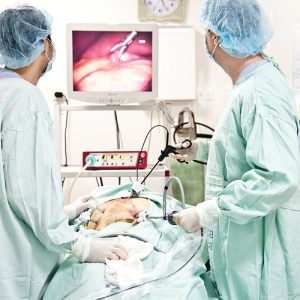The primary purpose of a screening colonoscopy is to identify and remove polyps. Polyps are colonic growths which may be benign, pre-cancerous or malignant. It is unclear on sight alone which type they are, therefore, it is necessary to remove all types of polyps. Removal of benign and pre-cancerous polyps is all that is necessary for treatment. Occasionally these growths contain a small focus of cancer and further interventions may be necessary. It is very important that this exam be carried out with the proper preparation in order to be able to visualize all polyps. Therefore, we encourage you to complete the preparation as instructed. Colon cancer is largely a preventable disease., given the widespread availability of this technology. Colonoscopy is 90% effective in preventing colon cancer.
Anesthesia
During the exam, you will be sedated by an anesthesiologist with a medication called Dipruvan. Most people are unaware that they are having the exam. The procedure usually takes between 15 minutes and 1 hour, depending on your colon. After the exam, you will remain in the recovery room for a short period of time while the sedation wears off.
Polyp removal
There is no pain during or after the polyp removal. Any polyps that are noted and removed during the colonoscopy are recovered for pathological examination. The polyp(s)/biopsies will be closely examined by a pathologist and the results will be available approximately one week after your procedure. You will receive a separate bill from pathology, which is not in our control. 35% of people will have a precancerous polyp removed during the procedure.
Post-op Limitations
You will be wide awake shortly after the procedure. However, you may not drive until the next day. You must arrange for a friend or family member to take you home. Legally, you are not allowed to go home in a taxi or Uber.
Risks
Colonoscopy is a low-risk procedure. The risks of colonoscopy include, but are not limited to, bleeding, infection, and perforation of the colon. The overall risk of screening colonoscopy (visualization only) is
1-3 in 10,000. The risk of therapeutic colonoscopy, colonoscopy with biopsy or polyp removal, is slightly higher. Because of this risk, long air trips should not be scheduled for 7 days following the procedure.

